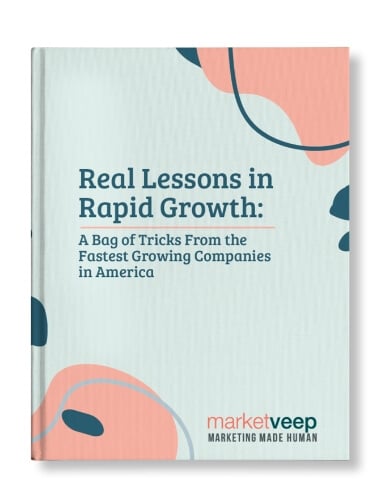Why the Marketing Flywheel is Taking Over the Sales Pipeline


By Bill Viau
HubSpot’s Brian Halligan declared the inbound marketing funnel retired in 2018. In its place? The marketing flywheel. Here’s everything you need to know about how (and why) a flywheel business model can help you close more deals than the sales pipeline ever did.
Gartner predicted in 2011 that customers would manage 85% of their relationship with an enterprise without interacting with a human by 2020. So far, it seems like they’re on the right track:
- 2012 — CEB reports that customers are 57% of the way through the purchase decision-making process before their “first serious engagement with sales.”
- 2013 — Lori Wizdo of Forrester says, “today’s buyers might be anywhere from two-thirds to 90% of the way through their journey before they reach out for a sales person.”
- 2015 — Google finds that B2B researchers average 12 searches before engaging with a specific brand's site.
- 2017 — DemandGen reports that buyers are “gathering intelligence on their options and forming opinions long before they are filling out any forms or talking with a salesperson” (only 29% spoke to or engaged with a sales rep within the first month).
There have even been rumblings that the CMO should now be called the CXO (as in this 2019 Forbes article) because the role of marketing has expanded end-to-end across the whole customer experience. Yep, big changes are in the works. But why is all of this happening?



Digital Disruption Has Blown Up the Funnel
Digital resources, online search, and automation have radically altered the way your prospects are accessing information and researching your company. Most of their interactions prior to the sale will come via social media, Google, blog articles, podcasts, online reviews, YouTube, and more.
In fact, Forrester has predicted that in 2020:
- Organizations will shift toward audience-based structures.
- Sales enablement will become a marketing responsibility for the majority of firms.
- Seller engagement will increase by 10% even as more transactions close digitally.
That last one is interesting. Although more of the buying process is now completed online, sellers will also get more involved. How? Why? Largely, this is because the new focus is on delighting the customer at every stage. Sales efforts start earlier, and overlap with marketing, as they position themselves as trusted advisors among the explosion of confusing, often conflicting information on the internet. Marketers create sales enablement resources, which contribute to direct sales.
Things just aren’t as straightforward as they used to be. This has required marketing and sales teams to rethink the traditional sales funnel and pipeline. Leads still have to go through awareness, consideration, and decision stages — but your role in those stages is different.
To understand this shift, let’s define the sales pipeline.
What’s the Sales Pipeline?
The traditional pipeline model is mainly used to track the progress of prospects through the key stages of a deal:
- Qualification: Where your rep assesses lead fit (need, budget, and authority to buy)
- Meeting: To explore the solutions that will work for the prospect’s needs
- Proposal: A detailed quote on what you’ll provide, the cost, and the duration
- Closing: Any final negotiations, contract signing, deal won!
Straightforward enough. However, it’s easy to confuse the sales pipeline with an oft-overlapping term: the sales funnel. These are two related but separate entities. The funnel follows leads, and the pipeline follows deals.
Sales Pipeline vs. Sales Funnel
- Sales Funnel: The funnel outlines the steps in the sales process that make a lead into a customer. The narrowing funnel chart shows the quantity and conversion rates of these leads as they move through each stage.
- Sales Pipeline: The pipeline tracks the steps in the sales process that move a deal from start to close. Generally, this picks up after you’ve had contact in some form with the lead. Unlike the funnel, which is an overview of the sales process, your pipeline is current. A pipeline report shows the number and value of active deals (e.g., 25 leads in Q3, 20% advanced from meeting to a proposal).
What do both of these models have in common? They’re one-way. Leads/prospects enter on one end, then exit when they become customers. In these approaches, customers are a product, a result, an afterthought.
What’s the Marketing Flywheel?
Our modern, customer-centric sales cycle needed a new model in which they weren’t an afterthought. Enter the marketing flywheel. Here’s an abbreviated evolution to get you up to speed.
The phrase “the flywheel effect” was first coined in a business context by Jim Collins in 2001 (in his book, Good To Great):
“Picture a huge, heavy flywheel — a massive metal disk mounted horizontally on an axle, about 30 feet in diameter, 2 feet thick, and weighing about 5,000 pounds. Now imagine your task is to get the flywheel rotating on the axle as fast and long as possible.
Pushing with great effort, you get the flywheel to inch forward, moving almost imperceptibly at first. You keep pushing and, after two or three hours of persistent effort, you get the flywheel to complete one entire turn.”
This compelling metaphor — about creating momentum in your business model — inspired Jeff Bezos to create his virtuous cycle for Amazon. Brad Stone described this development in The Everything Store:
“Bezos and his lieutenants sketched their own virtuous cycle, which they believed powered their business. It went something like this: lower prices led to more customer visits. More customers increased the volume of sales and attracted more commission-paying third-party sellers to the site. That allowed Amazon to get more out of fixed costs like the fulfillment centers and the servers needed to run the website. This greater efficiency then enabled it to lower prices further. Feed any part of this flywheel, they reasoned, and it should accelerate the loop.”

(Source: Tom Connor’s “The Flywheel Effect,” Medium)
HubSpot was then inspired (in part) by Bezos’ flywheel when co-founder Brian Halligan declared the funnel retired at INBOUND 18 and unveiled the Marketing Flywheel:
HubSpot’s flywheel puts customers at the center. Every process is cyclical, the buyer’s journey is non-linear, and delighted customers (promoters) refill the pipeline with leads. Whereas the old model made customers an end-point, the flywheel assigns them much more value: they’re the beginning of the next sale.
The idea is that a flywheel creates:
- Momentum: It’s hard to get moving, but once it does, it’s hard to stop.
- Positive Feedback Loops: The faster it spins, the easier it becomes to speed it up. Add force to any part of the flywheel, and the whole thing spins faster.
- A Snowball Effect: Lots of small pushes lead to a massive end result.
- Unified Direction: Friction slows down the wheel (inconveniences and obstacles that hinder the customer experience). It takes alignment and consistency from all sides to keep every push in the right direction, hence why ‘marketing and sales alignment’ is all the rage these days.
Everything revolves around the customer experience: post-sale customer evangelists fuel growth as much as (or more than) direct engagement with sales reps at each pipeline stage.
Why Isn’t the Pipeline Closing Deals Anymore?
Only 3% of people trust sales reps (an all-time low). Acquisition costs continue to skyrocket. Competition for leads on Facebook and Google gets stiffer as more customers, marketers, and salespeople flock to digital channels for their purchase decisions. Something has to change.
Think about it: cassette tapes gave way to CDs, which gave way to iPods, which fell to streaming services like Spotify. Times change.
In only the last ten years we’ve seen:
- Online reviews become widespread, accessible, and more involved in the decision-making process
- 67% of the buyer’s journey go digital
- Trust for salespeople plummet
- Social media grow as a platform for word of mouth recommendations
The old sales pipeline was too hands-on, too unsuited to these developments. Customers do independent research and don’t engage sales reps until much later in their process.
Why Is the Marketing Flywheel Taking Over?
Your best sales team today isn’t on the payroll; they’re your customers. Unlike the days when customers relied on salespeople for information, they’re talking with each other now — comparing notes, experiences, and recommendations.
Nowadays, you need a customer-centered business that prioritizes relationship building, the customer experience, and efforts that encourage advocacy. This model is far better suited to a world where people get their insights into your company from social sites, user-created comparison blogs, YouTube videos, and third-party reviews.
In other words, it’s time to say goodbye funnel, hello flywheel. The old sales pipeline was missing one crucial detail: customers aren’t an afterthought...they’re an accelerant. All that effort you put into acquiring a customer can’t dissipate or go ignored once the deal is closed. It’s the whole reason your sales process keeps moving.
While the old model focused on the short term — the linear production of customers — the marketing flywheel focuses on long term momentum and future growth. The flywheel wins with a continuous cycle:
- Engage over time to foster relationships
- Delight at every touch with a positive experience
- Attract more business when loyal customers sing your praises
How to Use a Flywheel Business Model
Seeing your business as a flywheel requires a paradigm shift. Strategy will change, and as a result, decisions will be different. Take closing the sale off the pedestal, and replace it with customer delight. A quality product is good. A great experience is even better. When you maximize customer delight, the sales will keep on coming.
This means that marketing and sales no longer pass customers off to service, never to be seen again. Customer service is a crucial element of the looping cycle that will take continuous, serious investment. You can’t invest all of your energy into your product and neglect the people who are engaging with it.
Jeff Haden gives a great example in this article on Inc., regarding the business strategy of an HVAC dealer in his area. He says the dealer focuses on selling customer service and maintenance contracts rather than new systems. Why? Well:
“Maintenance contracts drive service calls, which drive customer relationships, which drive sales of new systems, since it’s a lot easier to sell a $300 maintenance contract than it is to sell an $8,000 system — and when that time comes he’s no longer ‘selling a new system’ to a cold-call customer, he’s ‘replacing outdated and inefficient systems’ for a current customer. And he’s built a great business by feeding his flywheel in a smart way.”
The lesson is clear: it costs a lot less to retain (or upsell) existing customers than to acquire new ones. That, in turn, changes how you view prospects.
Sales have always been about balancing interest, budget, and fit. But post-digital-disruption, fit is the cornerstone. Is the customer honestly positioned to gain long-term value from your company, or upgrade in the future? Your efforts should be focused on the people you know you can help the most — not just those who you can influence to make the initial purchase. Churn from poor fit takes customers out of your flywheel, slowing you down as you work on new acquisitions.
These tips are helpful, but they only scratch the surface of what you can do with a flywheel business model. If you want to learn more, HubSpot has a great lesson on growing your business with a flywheel model available via the HubSpot Academy. It’s worth a look!
Get The Latest From
Market Veep
RELATED ARTICLES

Master Sales Funnel Strategies: Tofu Mofu Bofu!
Between SEO, SEM, and SERPS, we’re always finding clever ways to break down concepts into four...

Why B2B Demand Generation Strategies Work
The sparkly, PR rep cousin of lead generation, this approach is all about growing your audience by...

Key Marketing Strategies for Robotics Manufacturers
In fact, experts project that the U.S. Robotics market is on track to pull in $7.85 billion in 2024...

Get Growing!
Download our eBook and get advice from 8 CEOs of Inc. 5000 companies in their own words.

GREAT MARKETING PARTNER
Market Veep is a great firm that handles all of our marketing efforts. This is the second time that I have used the firm. I highly recommend Market Veep!

Cres F.

EXCEPTIONAL EXPERIENCE
Market Veep's Onboarding Experts in Inbound Marketing are an absolute game-changer! From the get-go, their approach was top-notch. Market Veep's team has undoubtedly set the bar high for excellence in inbound marketing. Five stars aren't enough to commend their outstanding service!

Matthew W.

BEST PARTNER EVER!
As a growing business, setting up our first-ever HubSpot account was a crucial step towards enhancing our marketing and customer management strategies. From the moment we contacted MarketVeep, their team demonstrated professionalism, expertise, and a genuine desire to help us succeed. Overall, our experience with MarketVeep was exceptional, and we couldn't be happier with the results. Thanks to their guidance, we are now utilizing HubSpot to its fullest potential, streamlining our marketing efforts, and nurturing leads more effectively.

Jean M.

SET UP FOR SUCCESS!
We had an exceptional experience with Market Veep! Their team is professional, super organized, and friendly, and I truly enjoyed working with them. They executed on time and made the process super easy with their organization and documentation. In addition, they provided additional guidance and answered my many questions as I was new to HubSpot, and provided documentation resources for future use. We're now set up to leverage all that HubSpot marketing has to offer, and we couldn't have done it without Market Veep's expertise.

Bailey G.

OUTSTANDING WORK
There aren't enough words to describe the outstanding, professional work MarketVeep has provided to our company. From start to finish, the website design/development team at MarketVeep assigned to our project was extremely knowledgable, respectful, efficient and timely. The results went above and beyond our expectations and we could not be more thrilled with the improvements to the user experience on our website! Bravo MarketVeep, we'll absolutely be back with more projects!

Nadine B.

5 STARS FOR MARKET VEEP!
We had a fantastic experience with Market Veep! Their expert team seamlessly guided us through implementing HubSpot and provided comprehensive training across Sales, Service, and Marketing Hubs. Their knowledge and support significantly enhanced our workflow and overall efficiency. Highly recommend Market Veep for top-notch HubSpot solutions!

Anneke C.








